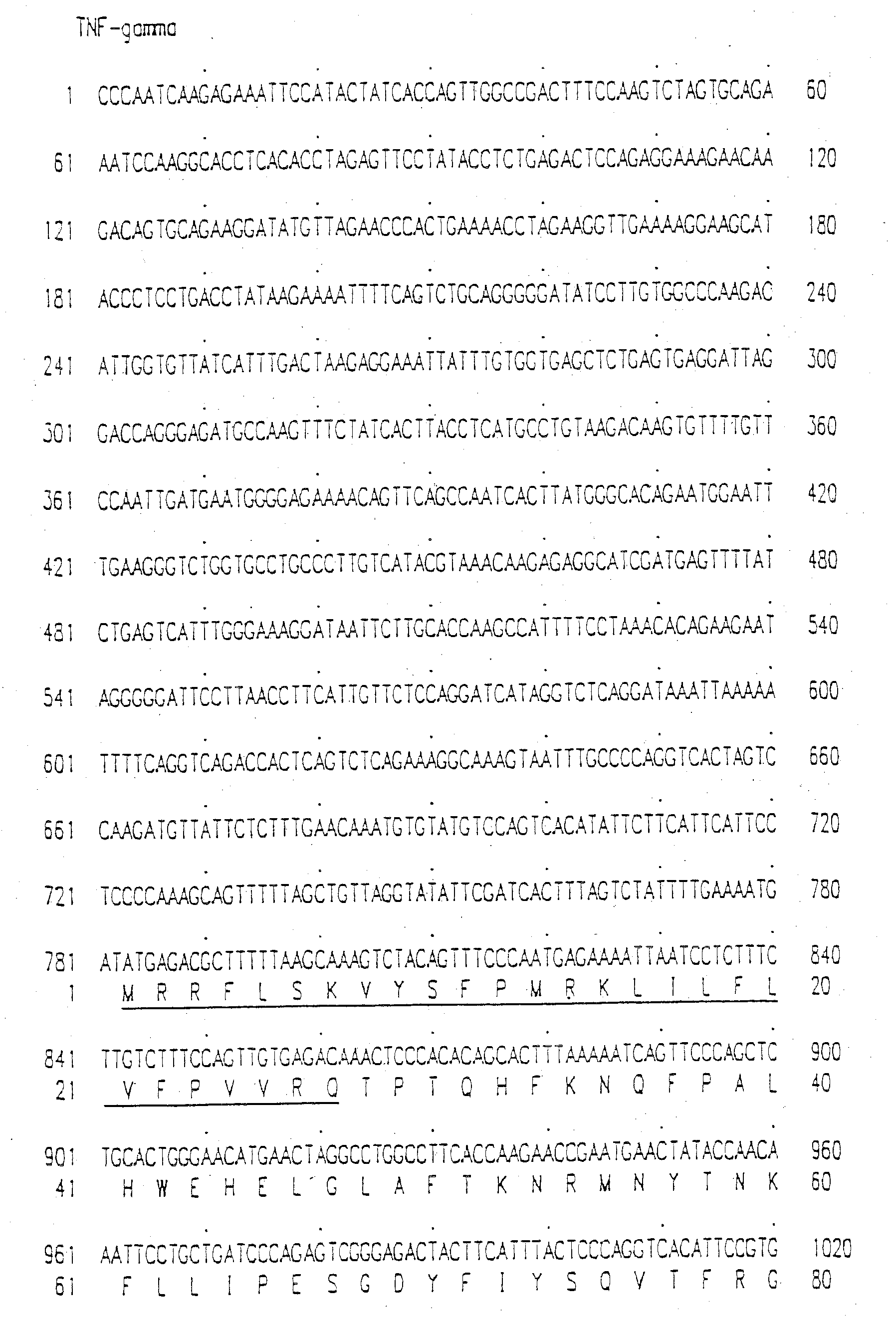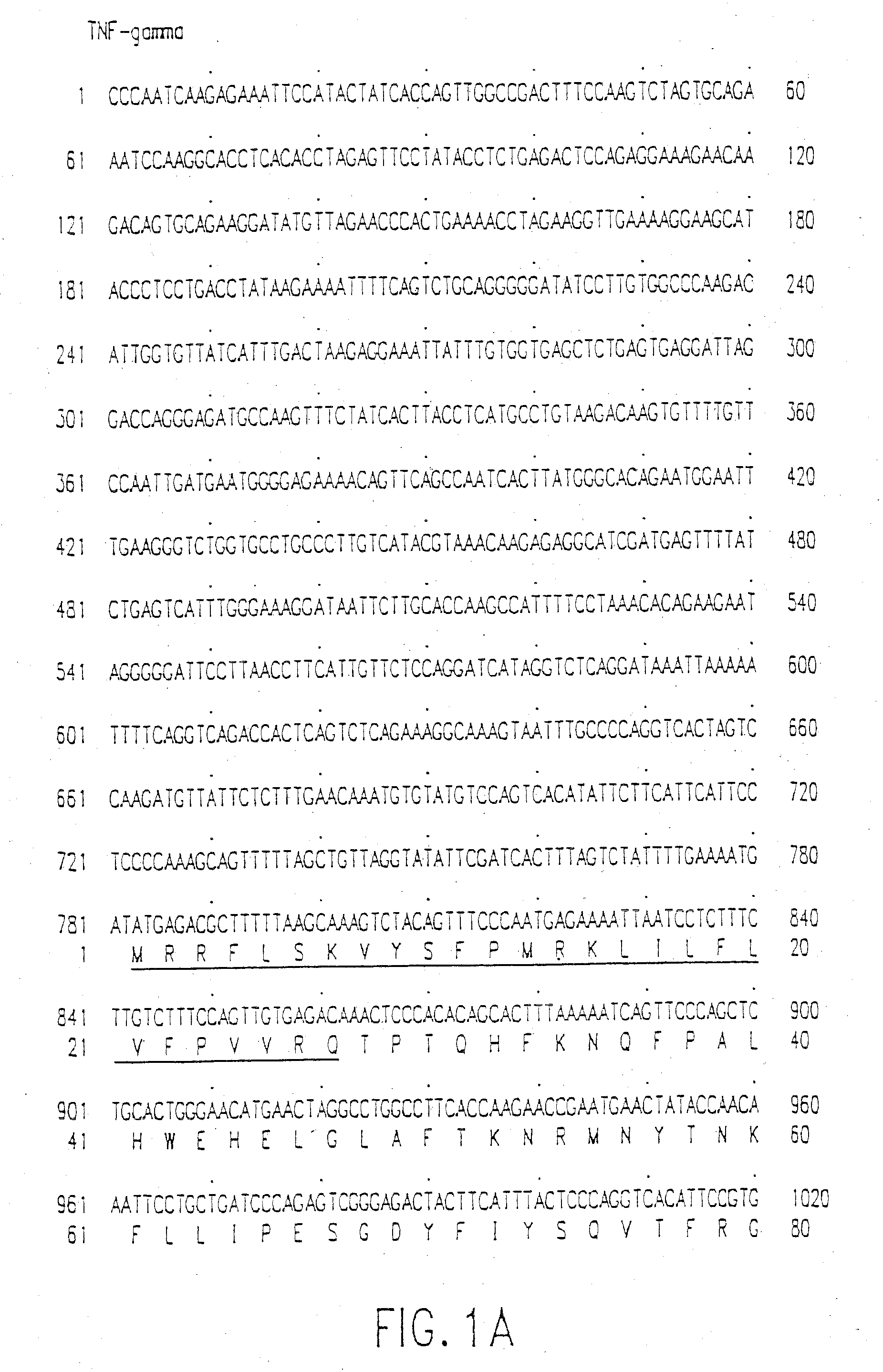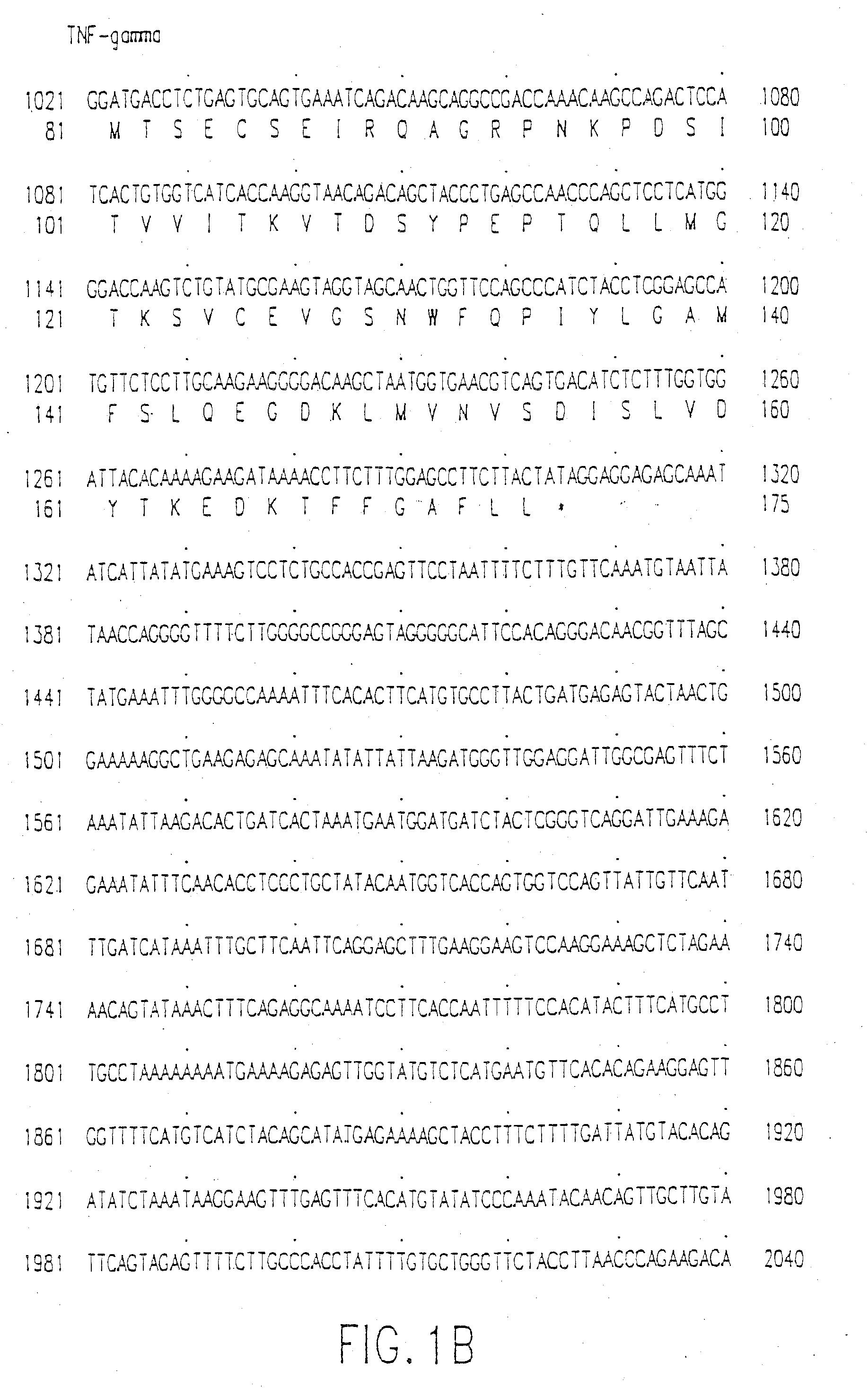Tumor Necrosis Factor-Gamma
a tumor necrosis factor and gamma technology, applied in the field of tumor necrosis factor gamma, can solve the problems of pathological angiogenesis, once initiated, often prolonged and difficult to stop
- Summary
- Abstract
- Description
- Claims
- Application Information
AI Technical Summary
Benefits of technology
Problems solved by technology
Method used
Image
Examples
example 1
Bacterial Expression and Purification of TNF-Gamma
[0638]The DNA sequence encoding the full-length TNF-gamma ORF, ATCC™ Deposit No. 75927, was initially amplified using PCR oligonucleotide primers corresponding to the 5′ and 3′ sequences of the TNF-gamma protein. Additional nucleotides corresponding to TNF-gamma were added to the 5′ and 3′ sequences respectively. The 5′ oligonucleotide primer is shown as SEQ ID NO:13 and has the sequence 5′-GCG CGG ATC CAC CAT GAG ACG CTT TTT AAG CAA AGT C-3′ which contains a Bam HI restriction enzyme site followed by the first 24 nucleotides of TNF-gamma coding sequence starting from the initiating methionine codon. The 3′ sequence 5′-CGC GTC TAG ACT ATA GTA AGA AGG CTC CAA AGA AGG-3′ (SEQ ID NO:14) contains sequences complementary to an Xba I site and 22 nucleotides of TNF-gamma. The restriction enzyme sites correspond to the restriction enzyme sites in the bacterial expression vector pQE-9 (Qiagen). pQE-9 was then digested with Bam HI and Xba I. T...
example 2
Cloning and Expression of TNF-Gamma Using the Baculovirus Expression System
[0666]The DNA sequence encoding the full length TNF-gamma protein, ATCC™ No. 75927, was amplified using PCR oligonucleotide primers corresponding to the 5′ and 3′ sequences of the gene: The 5′ primer has the sequence 5′-GCG CGG ATC CAC CAT GAG ACG CTT TTT AAG CAA AGT C-3′ (SEQ ID NO:15) and contains a Bam HI restriction enzyme site (in bold) followed by 24 nucleotides of the TNF-gamma gene (the initiation codon for translation “ATG” is underlined). The 3′ primer has the sequence 5′-CGC GTC TAG ACT ATA GTA AGA AGG CTC CAA AGA AGG-3′ (SEQ ID NO:16) and contains the cleavage site for the restriction endonuclease Xba I and 22 nucleotides complementary to the 3′ non-translated sequence of the TNF-gamma gene. The amplified sequences were isolated from a 1% agarose gel using a commercially available kit (“Geneclean,” BIO 101 Inc., La Jolla, Calif.). The fragment was then digested with the endonucleases Bam HI and Xb...
example 3
Expression of Recombinant TNF-Gamma in COS Cells
[0681]The expression of plasmid, TNF-gamma-HA is derived from a vector pcDNAI / Amp (Invitrogen) containing: 1) SV40 origin of replication, 2) ampicillin resistance gene, 3) E. coli replication origin, 4) CMV promoter followed by a polylinker region, an SV40 intron, and a polyadenylation site. A DNA fragment encoding the entire TNF-gamma precursor and a hemagglutinin antigen (HA) tag fused in frame to its 3′ end was cloned into the polylinker region of the vector. Therefore, the recombinant protein expression is under the direction of the CMV promoter. The HA tag corresponds to an epitope derived from the influenza hemagglutinin protein as previously described (I. Wilson, H. Niman, R. Heighten, A Cherenson, M. Connolly, and R. Lerner, 1984, Cell 37, 767). The fusion of HA tag to our target protein allows easy detection of the recombinant protein with an antibody that recognizes the HA epitope.
[0682]The plasmid construction strategy is de...
PUM
 Login to View More
Login to View More Abstract
Description
Claims
Application Information
 Login to View More
Login to View More - R&D
- Intellectual Property
- Life Sciences
- Materials
- Tech Scout
- Unparalleled Data Quality
- Higher Quality Content
- 60% Fewer Hallucinations
Browse by: Latest US Patents, China's latest patents, Technical Efficacy Thesaurus, Application Domain, Technology Topic, Popular Technical Reports.
© 2025 PatSnap. All rights reserved.Legal|Privacy policy|Modern Slavery Act Transparency Statement|Sitemap|About US| Contact US: help@patsnap.com



